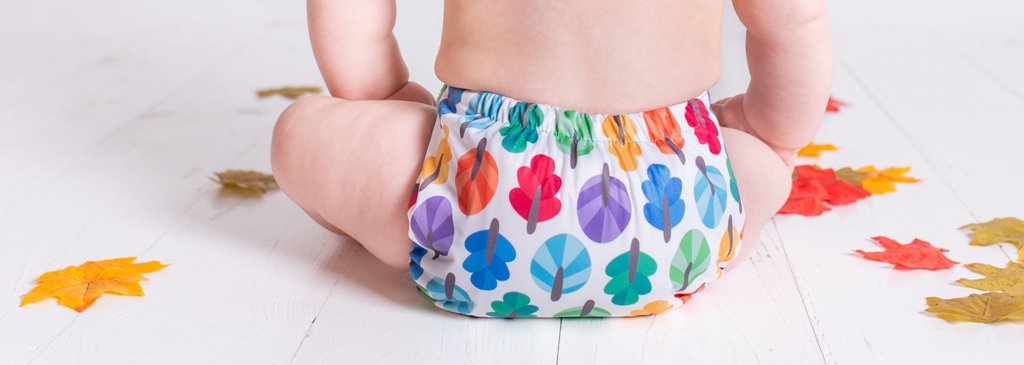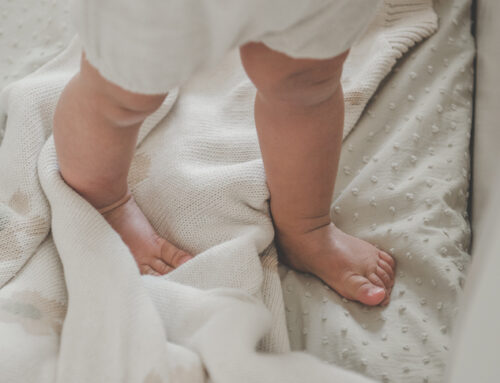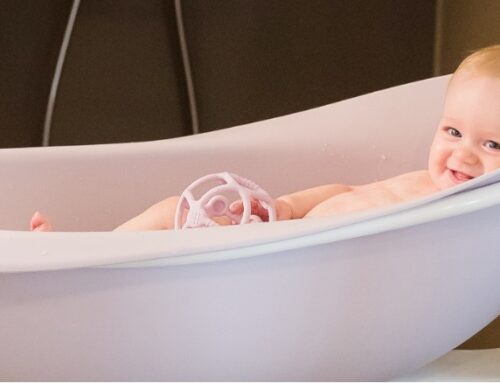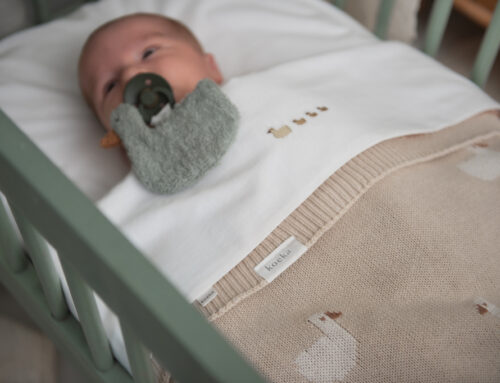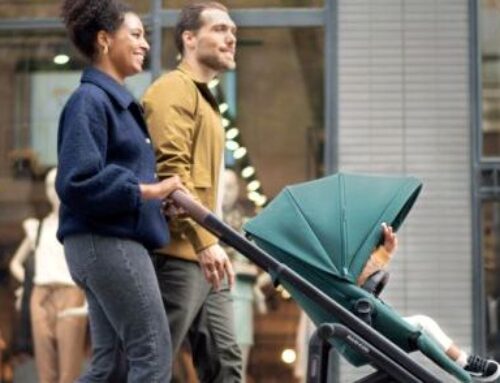Disposable diapers are easy to buy and parents do not need to wash and dry anything. They offer a solution when children are raised by more than one person. But they are also enormously polluting and cause children to become toilet trained later on. Reasons enough to look at alternatives.
Disposable diapers absorb better and better, but due to suberabsorbers, children do not feel wetness and therefore less likely the need to sit on the potty. As a result, children in our western society are only becoming toilet trained increasingly later. Globally, sales of disposable diapers has grown from less than $20 billion in 2004 to more than $50 billion in 2017.
Children toilet trained at a a later age
In concrete terms, children are now toilet trained seven to twelve months later than about 30 years ago. A survey in 2017 among primary school pupils shows that 4% of the children who go to year 1, are not toilet trained. That’s one child per kindergarten class. Teachers don’t like this, of course. In addition, two children aged four to seven regularly have a ‘little accident’ in class. (Source: Nederland Centrum Jeugdgezondheid (Netherlands Youth Health Centre))
Psychological cause toilet training
In addition to the pleasant sensation of a soft disposable diaper, there may also be a psychological cause, causing children to have problems becoming toilet trained. Think of a divorce, the birth of a new baby in the family, fear, etc. But this is only a very small percentage. In 97 percent of the cases no physical cause is found, in other words it is a change in behaviour. If children are not yet toilet trained before they go to school, the Baby clinic offers help. It is also possible to make an appointment with the pediatric gastrointestinal clinic.
When to start toilet training
Due to the disposable diaper industry, many toilet training tips are lost while it is possible to toilet train children from the age of nine months! This is substantiated by a Swedish study by the Sahlgrenska Academy that followed mothers and their babies in Vietnam for two years. There they start much earlier with the toilet training, namely right from birth, where they work with a certain flute technique.
It is important to know that children need to learn that they experience their toilet routine as something normal and positive without developing fears. During this process, a good, relaxed sitting posture is important. In addition to the potties, there are useful aids: toilet seat reducers, regular toilet seats with integrated children’s seats and toilet trainers with a 3-in-1 function: potty, toilet trainer and a toilet seat reducer.
Durability of diapers
Children are now changed five to six times a day. This is far too often according to sustainability manager Bart Waterschoot. With today’s good diapers, changing them three times a day should be enough, he says. This also ensures a lot less waste. To study the sustainability of diapers, the science magazine Eos went looking for the most sustainable diapers. It considered the transparency of the manufacturers, the results and efforts in terms of sustainability. The private label diapers of Jumbo, Kruidvat, Etos and Albert Heijn came out best from the test. These manufacturers are actively committed to human rights and the environment, Eos reports. Other major brands and supermarkets did not want to cooperate in this study.
What about diaper recycling?
Ecological diapers with biodegradable materials are on the rise. Yet no diaper can really be called durable. This is because used diapers are difficult to recycle due to the plastics they contain. After two years of testing, there is a diaper recycling plant at waste processing company ARN in Nijmegen. Diapers and contents are heated after which the substances can be separated into four new raw materials: green gas, plastic, biomass and fertilizer. It is the second time they have tried to recycle diapers. About ten years ago, the first diapers were collected and processed at Knowaste in Arnhem from the Netherlands, Belgium and Germany, but the project had to be stopped. The plant suffered from rising energy prices and falling prices for the incineration of waste on which American shareholders pulled the plug on the project. The big problem with diaper recycling is to make it profitable. The technical process in the plant costs more energy than it generates and the costs do not outweigh the revenues.
Meanwhile, experts wonder to what extent toxic substances and disease processors such as bacteria, viruses and drug residues including antibiotics, hormones and radioactive iodine are actually broken down during the recycling of regular and incontinence diapers. The National Institute for Public Health and Environmental Protection (RIVM) has been researching this since 2017.
Washable diapers: the alternative
Parents that are even slightly environmentally conscious, consider whether or not to use washable diapers. Washable diapers are soft, they breathe and are comfortable. The materials of which the diapers are made, are according to the current environmental standards. There are diapers made of bamboo, synthetic fibre and ecological cotton. Handy, biodegradable wipes collect stools and, depending on the brand, may be flushed down the toilet. A washable diaper is durable, it reduces the diaper pile and ensures that children become toilet-trained at an earlier stage, because they feel ‘wetness’ sooner. Milieu Centraal calculated that the average cost of a disposable diaper is 1310 euros, while the cost of a washable diaper is 830 euros (with an initial investment of 400 euros). These amounts are calculated taking into account that the disposable diaper and the washable diaper are used an equally long period of time. Children are more likely to be toilet trained with washable diapers, so the benefit can be even greater.
Are washable diapers really better for the environment?
Milieu Centraal investigated the extent to which washable diapers are now better for the environment than disposable diapers. The use of water, air and water pollution, greenhouse gases and land use were taken into account. Cotton plantations take up seven times more land for disposable diapers than the land for washable diapers. Both the washable and disposable diaper cost a lot of water to produce. Even organic cotton needs a lot of water to grow and this also goes for making wood pulp and plastic from petroleum for the disposable diaper. In addition, washable diapers still need to be washed. And then there is the use of artificial fertilizers and pesticides in the cultivation of cotton. So far the diapers don’t differ that much. Only with diapers made of organic cotton and the EKO and GOTS quality mark, you can be sure that no chemicals and artificial fertilizer have been used.
But if you look at energy consumption and greenhouse gases, there are big differences. Producing disposable diapers costs more energy. Even without using the dryer it takes 2.5 times more energy. It is also possible to save energy by washing at 40 degrees instead of 60. And the environmental benefits continue to grow as more children in a family use washable diapers.
Washable diapers tested by municipalities
The use of disposable diapers generates 140 million kilos of dirty diapers annually. That’s about 260 kilos a year per child with five diapers a day. So it’s not surprising that municipalities are looking for alternatives. In 2015, the municipality of Hengelo conducted a research into the matter and made washable diapers available to 50 parents; the parents had to do the washing themselves. The results were positive: 67% of the users thought it was a positive experience, 14% wanted to go all the way and 53% wanted to participate only part-time. One third (33%) of the participants decided to quit. Parents see the potential savings (500 to 700 euros), but more can be done to improve the image of the washable diaper, this research showed. In the meantime, trials have been carried out in Heerenveen, Rotterdam, Schiedam and Hoogeveen.
Turning the tide
Melanie Weidner of Kaatje Katoen reports the following about the experience with washable diapers: We notice more and more that people have heard of washable diapers or know someone who uses them. However, there are still a lot of people with a lot of prejudices who don’t want to have anything to do with it. The main reason parents state why they want to use washable diapers is because it saves waste. The cost will be taken into account but is not actively mentioned as a reason. Maybe this is related to the large investment made at the beginning of the baby’s life’? To really turn the tide so that people become enthusiastic about the use of washable diapers, we still have a few things to do according to Kaatje Katoen: We think that politicians should actually take measures and do something about waste and the use of disposables. Now people aren’t stimulated enough to try something different. In addition, we believe that municipalities should also provide subsidies, because the waste problem is also their problem and even set an objective for municipalities in 2020. We are happy to enter into discussions with municipalities to help them think of solutions to the waste problem. Where waste tax is introduced, we see that residents also start thinking about alternatives themselves’.
Image: TotsBots


